 Your website is your best tool to build trust with the kind of clients you want to serve.
Your website is your best tool to build trust with the kind of clients you want to serve.
Although it may not always be the first page a prospect is led to, your home page generally receives the most traffic. A prospect might visit one of your blogs from a social post or be led to an events page from one of your emails, but if they like what they see they’ll want to know more about you, and to do that, they’ll go straight to the home page.
Because it’s one of the most viewed pages, your home page works best when it’s a ‘summary’ of the rest of the site. You want to use key messages that stand out to the kind of clients you want, and just enough content to entice them to explore the rest of the website.
Create your own homepage wireframe to put this marketing tip into action
We’re going to create our very own simple wireframe. A wireframe sounds like an awfully complex and technical thing, but don’t worry – I’m not going to throw you down a web design rabbit hole and hope you find your way. In its simplicity, a wireframe is the basic layout of a web page. We’re going to focus less on the design aspects of a home page, and simply on what the key messages are, and where we’re going to position them.
You can do this in whatever way feels most creative for you. A piece of paper and a pen, a google doc, an art pad and some charcoal if you’re so inclined. I’ll show my work too, using a fictional accounting firm I made up (Old MacDonalds), so you can see how ‘rough’ it can be.
This wireframe will be the plan that guides you when it comes to actually building your homepage on the site, (or having someone build it for you). It’ll prevent you from starting a new page build and promptly abandoning it when you’re stuck for what to write.
Your home page wireframe must include these five core things:
1. A clear and simple header
The first thing to catch a visitors eye is your header – it’s your first impression statement on the page. You want it to address the people you want to work with, and show them what you offer in a clear and concise way. The aim of the game here is total clarity. As Donald Miller says in ‘Building a Storybrand’ – “if you confuse, you lose”. And you only have a short window (and a short attention span) to either win or lose your ideal clients’ interest.
Last year, at a party, in one of those ground-swallow-me moments, I found myself in a conversation with a couple of friends-of-friends. Unbeknownst to me, one was a paramedic, the other a refugee charity worker. Both told heroic, inspiring stories about the work they do and how it impacts people’s lives. When it came to me, clearly a tad overwhelmed, I said something like:
“I work with accountants. I do marketing. Well I help them do the marketing really. But I do actually do the work itself, if you see what I mean….”.
I’m pretty sure I lost both of them to the bar snacks at ‘accountants’.
In order to capture people’s attention instantly, we need to help them understand the work we do, and how it will impact their lives. And quick.
Give it a test. Picture yourself in a conversation with a new person at a networking event or party. If you had only your existing home page header to tell them who you are, and what you offer – would it suffice?
Imagine responding with a classic slider banner: “NUMBERS IN THE CLOUD. GROWTH. PASSION FOR BUSINESS. ARE YOU HAVING SLEEPLESS NIGHTS?” said frantically at speed. Is your crowd relating? Or heading for the peanuts?
Now draft a clear concise header.
P.s. Don’t feel disheartened if suddenly your existing header doesn’t feel right, or even if it takes a long time to come up with the best message ever, only to change it two days later.
This isn’t a one time exercise, we’re always reassessing whether our messages are right or how we might need to adapt. We regularly go through this process with our clients, but it’s a long process we’re going through ourselves at PF too. Right now, there’s little time for ‘posh professional statements’. Just trying saying what you want to say.
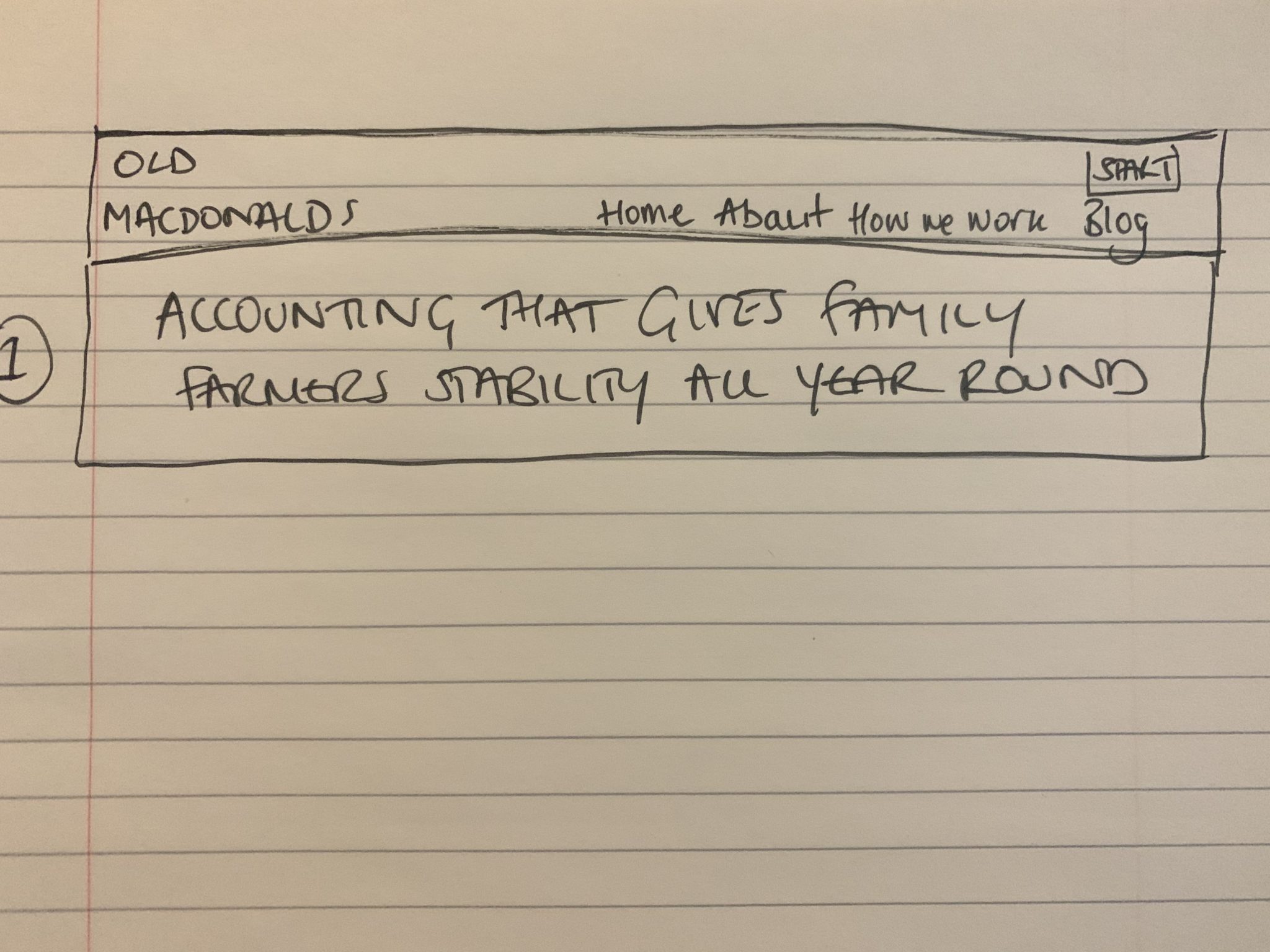
2. Confirmation that you know your prospect well (A show and tell section)
I’m going to call this next section the ‘show and tell’. You’re going to show that you understand your audience on a deep level and you’re going to tell them a little about why you work with them exclusively.
This is a little introduction to encourage your prospect to explore your ‘About Us’ page. Contrary to what you might think, your about us page isn’t really about you. The ‘us’ in ‘about us’ is you and your ideal client. So this is your opportunity to show you understand their unique problems and to define the values you share in common. To attract the clients you want, you show first they can trust you, and secondly they can like you!
This is also your opportunity to disqualify the kind of prospects you don’t want. The people who don’t relate to the challenges you identify, and don’t like your values are going to be turned off. Excellent. Cheers. Thank you and good day.
When we figure out this key message on our home page wireframe, it dictates the way we write our whole ‘About Us’ page later down the line, because you have your audience in front of mind.
Draft out a key message that speaks to the character of your audience. A little about them, and a little about you.
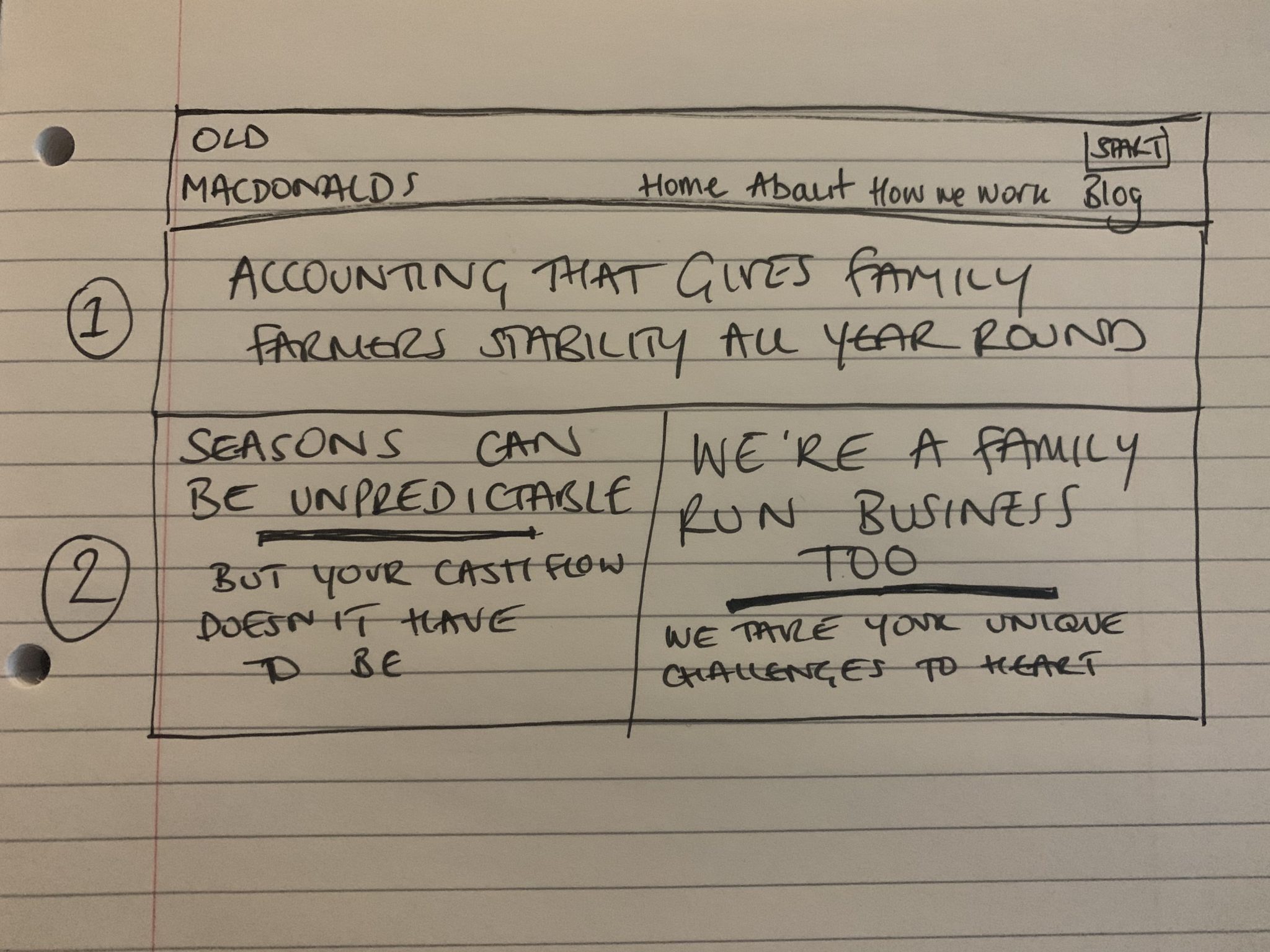
3. A nod to your plan, and how it will solve their problems
When a business owner comes to your homepage, they’re not looking to see if you do management accounts, offer a wills and probate service or even produce tax returns. They’re looking for a clear plan to solve their problems and ultimately make their life better in some way. Your plan might reassure them that:
- They will no longer have to worry about the safety and security of their family
- They will finally be able to employ someone and not get buried under their business
- It’s possible to both make a profit and be at the school plays
- They’ll no longer have to fear surprise bills they can’t pay
- They’ll be able to safely pay all their staff every month
This is your chance to show your ‘way’ of solving problems like these. By working with you, your prospect will undergo a transformation, and your plan is what gets them to where they want to be. If you’re able to address their main concern and offer an understandable solution, they’re going to be more willing to entertain your offer.
Draft your prospects main internal problems and show how your plan solves them. This is an introduction to your ‘how we work’ or ‘services’ page.
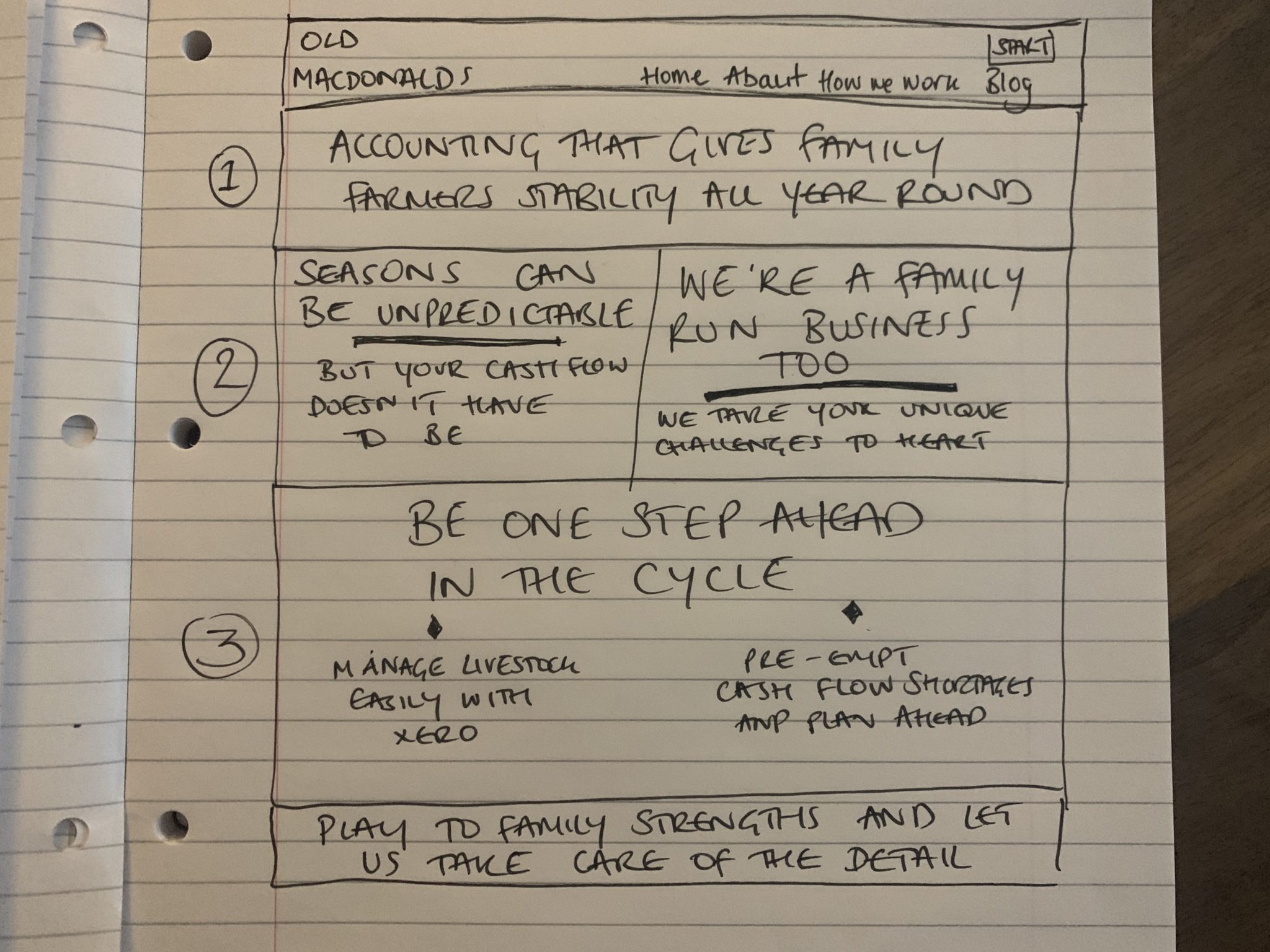
4. Proof that other people have seen success with your plan
Remember we said that your website is your best tool to build trust? Well nothing builds trust and credibility quite like a testimonial or case study. Instead of ‘taking your word for it’ that your plan is going to be transformative, your prospect can put themselves in the shoes of someone who has already been through the journey.
Despite the fact everybody is buying all the time via good marketing, nobody likes being sold to. And YOU KNOW when you’re seeing something “salesy”. The fact the word “salesy” exists proves it! The beautiful thing about a genuine testimonial is that it’s real words from a real person – it’s not tacky or branded. It’s an unbiased and relatable way to influence your prospects’ purchase decisions.
Find your very best testimonial, or think about who you might source one from. Here’s a really great blog from Jamie on how to get the best testimonials from your clients. You want a testimonial that will show a client’s journey of transformation.
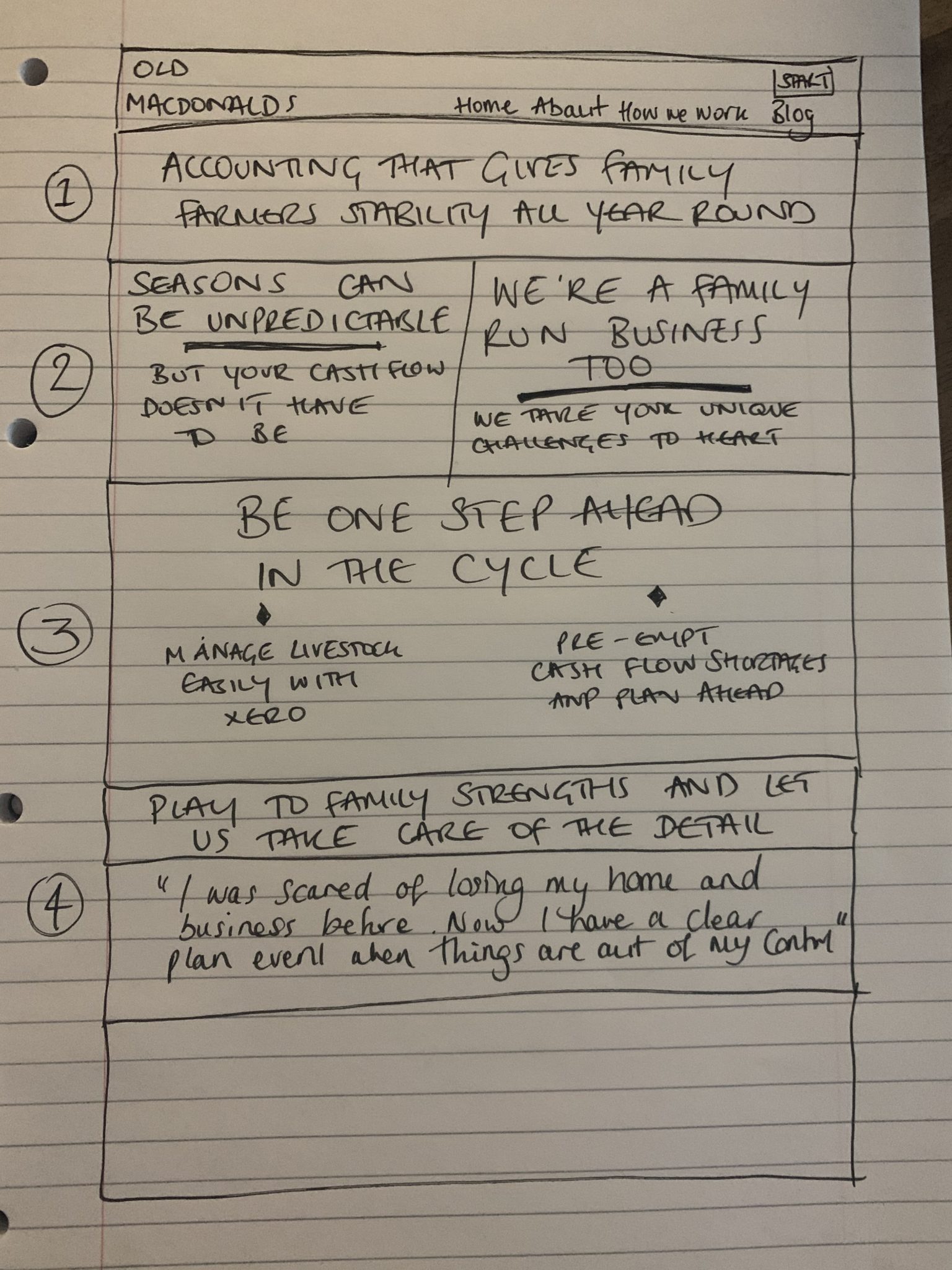
5. An opportunity to buy (or be moved to action)
You might have the kind of audience who want to absorb every piece of information they possibly can before they move to the buying stage. On the other hand, you might have the kind of audience who are time poor, and just want to know how to buy.
I.e “Looks good, looks good, looks good – how much can I expect to pay”.
Either way, you want your prospect to do something. And if people want to buy, we need to make it easy for them to. At the end of your homepage you’ll want to have an action button to help them get started. Ask yourself, what is the one thing you want your prospect to do? Perhaps you want to lead them to your pricing page where they can get an idea of costs and fill in a request form. Maybe you want to send them to a ‘get started’ page where they can tell you more about their business to get the ball rolling.
Have a secondary call to action for those who aren’t quite ready, to send them to some free resources so they can do more information absorbing. You might even go one step further and create a ‘what if I’m not ready to buy?’ blog and send all the hesitaters there.
Just always remember, your call to action should be unambiguous. Think of a big button that says “See pricing” over “What’s next?”. Your prospects don’t need to be reminded to wonder what’s next, they want to be able to do whatever is actually next.
Put yourself in your prospects shoes and complete this question – “Now I have all the information, I want to….”. Then make this a button at the end of your wireframe.
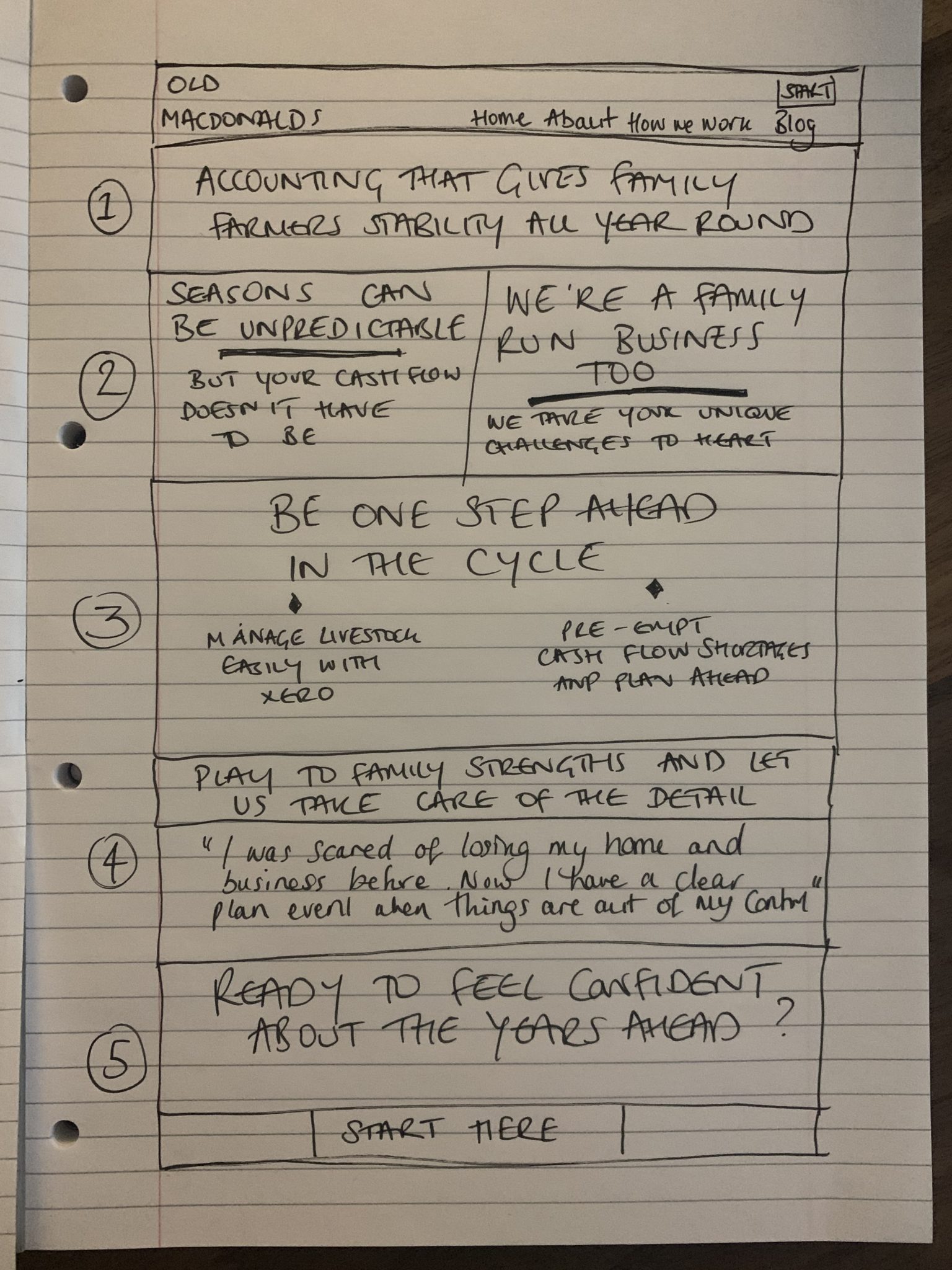
Your homepage will include other things
There will be some design needed, images you’ll want to add, social media buttons etc. Those things are important too – they will support the key messages in giving an overall impression to your buyer. But hone the key messages first. Nail the words that will really have an impact on the people you want to target.
And remember – we can help at any stage, whether you’re refreshing your existing website, or starting completely from scratch. Whether you’re stuck figuring out what your key messages should be, or you want to work through this process for your whole site – we have a website workshop designed to give you clarity on your key messages, and an entire site structure as a blueprint for a website build.
If you’re looking at the PF website, you may realise we’re working on this too! We’re putting our advice into action and getting clarity on our own key messages. It’s a long process (and not one we’re exempt from!) but it will be rewarding when our website speaks the language of the accountants we love working with.
Have a think, a sketch, and a play – and if you want to share your work in return and get some feedback, please do! Head over to our Facebook marketing community.

